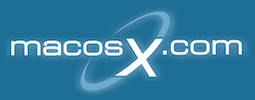I'm a pretty new mac user & am used to working with windows. I have a few things I'd like to know if its possible to do o my mac that I'm used to doing in windows:
1.
Defragment the HD:
On windows I can defrag my HD. is it possible on Mac. & if so how?
2.
Scandisk the HD:
On windows I can scandisk (CHKDISK) my HD. is it possible on Mac. & if so how?
3.
Refresh key:
When I send files from my windows PC to my mac they don't appear right away on the mac deskop. If I open finder it seeems to nudge them into action & they show up. In windows I can refresh the desktop (or any window) by pressing F5.
Is there something like this on the Mac?
4.
Delete key:
If I select a file/files & hit the delete key (below the help key) it doesn't delete the files. I have to hold the command key & press delete. Is there 1 key I can hit to delete files instead of pressing 2?
5.
Memory:
After using a few apps & closing them I see (on a konfabulator widget) that I only have a low amount of memory free (even though I've cloed all/most of the apps).
Is there a way of flushing the memory to free up the space again?
1.
Defragment the HD:
On windows I can defrag my HD. is it possible on Mac. & if so how?
2.
Scandisk the HD:
On windows I can scandisk (CHKDISK) my HD. is it possible on Mac. & if so how?
3.
Refresh key:
When I send files from my windows PC to my mac they don't appear right away on the mac deskop. If I open finder it seeems to nudge them into action & they show up. In windows I can refresh the desktop (or any window) by pressing F5.
Is there something like this on the Mac?
4.
Delete key:
If I select a file/files & hit the delete key (below the help key) it doesn't delete the files. I have to hold the command key & press delete. Is there 1 key I can hit to delete files instead of pressing 2?
5.
Memory:
After using a few apps & closing them I see (on a konfabulator widget) that I only have a low amount of memory free (even though I've cloed all/most of the apps).
Is there a way of flushing the memory to free up the space again?

